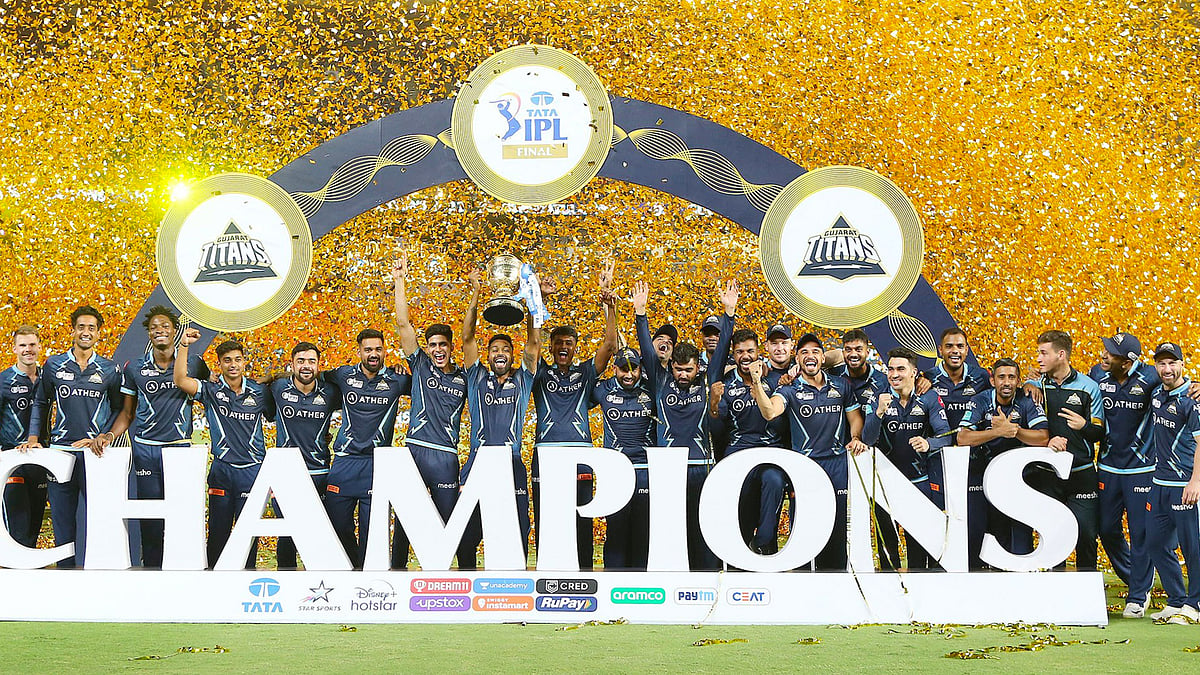New innovations in an old format: Kicking off IPL 2023
Home matches will return after three years and there’s new scope for ‘tactical’ adjustments.
In the early years of the Indian Premier League, besides the scrutiny by cricket purists and connoisseurs of the long form, social scientists turned their gaze to the league too. One of them was sceptical about the chances of franchise teams building local identity bonds with the cities or regions whose names they bore.
This was a reasonable doubt – something that didn’t question the popularity of the event, but which noted that the local branding was attuned to a pan-India following, even a global one. One way in which teams addressed this challenge was the home-and-away format, meaning teams had a “home city” as their base and venue for a certain number of matches. Through this, teams tried to strike a local connect beyond the tokenism of merely using the names of certain places.
In the last 15 editions of the IPL, the cultivation of such a connect has worked to different degrees for different teams. Chennai Super Kings, for instance, found that their branding of skipper MS Dhoni as ‘thala’ resonated well with the team’s supporters. But the pandemic and bio-bubble restricted the number of venues and so, the last three editions of the league could not follow the home-and-away format. The 16th IPL, which starts today, will see this format’s return.
If this is one continuity with the past that teams will welcome after a three-year hiatus, there are some changes too that they would like to adapt to quickly. As one of the richest and most-watched sporting leagues in the world, IPL is alert to other leagues grabbing its share of eyeballs. There’s a chance of viewership overkill due to the hectic calendar of nonstop international cricket – in fact, IPL’s own bloated schedule has been discussed before.
But the huge appeal of the league seems to dwarf such concerns. In some ways, it’s by reinventing itself that the IPL has sought to be at the vanguard of T20 leagues in the world.
Last year’s IPL saw the seamless inclusion of two new teams – Gujarat Titans and Lucknow Super Giants – much to the surprise of sceptics who had their doubts about how new teams would impinge on the high competitiveness of the matches. Clearly, such doubts have been dispelled. Both teams made their way to the final four and Gujarat clinched the title itself, belying any misgivings on the question of competitiveness. On the contrary, much-feted teams like Mumbai Indians and Chennai Super Kings found themselves struggling throughout the tournament and could not reach the playoff stage.
This year has some interesting points of departure too. The most significant is the introduction of the “impact player” substitution – something that will be keenly watched for its potential to alter the match situation as well as the decision-making that will go into picking such a substitute. Earlier, the idea of a match-altering figure in a team was more a viewer’s perspective on the match and team composition. Now, the IPL team leadership would find it very much a function of their strategy sessions. The regularisation of the idea of impact appraisal will spill over to other leagues too, and sooner rather than later. Some have already noted the idea.
The other innovation is no poorer in the strategic implications it has for how the teams will approach their composition at different venues. Teams are now permitted to name their playing eleven after the toss. It may merely seem like a procedural tweak but it carries significant implications for how the team will assess its strength given pitch conditions, dimensions of the grounds, and variations in boundary sizes. This is even more so when it’s equipped with the information of what it will do first – bat or ball. In all likelihood, the next few weeks will show the IPL think-tank wasn’t off the mark in believing these rules will add “new tactical/strategic dimensions”.
While the off-field saga of player auctions generates its own set of headlines, the viewers largely assign star-gazing roles to on-field performances. Amid an array of stalwarts, some players start this edition with a buzz for different reasons.
English batting great Joe Root is making his much-delayed IPL debut with his revamped game in the last two years. Meanwhile, new English batting sensation Harry Brook will be a clear attraction this season. Australian all-rounder Cameron Green will be keenly watched for the balance he can bring to any team.
Among the players who earlier made their presence in IPL felt, English pace bowler Jofra Archer’s return was long-awaited. Kiwi batting great Kane Williamson will also be eyeing a better season after an indifferent show last year. Among runs in the international circuit this year, Shubham Gill will be aiming to carry on with his prolific scoring to bolster his IPL team at a far brisker rate.
At the same time, this season will also be a closely watched battle of strategies and leadership styles of different captains. The tweak of rules, and how this will impact them, will bring new elements of adjustment into play.
In some ways, the current edition of the IPL will finally shake off the pandemic era curbs that constricted the itinerary of the last three editions. While this will see the league getting back some key elements that were part of its brand of T20 cricket, this season is also a point of departure. In line with its past efforts in reinventing itself, the IPL offers wider strategic options for competing teams to show their tactical acumen. In doing so, IPL could have chosen to trim a week or two from its schedule – an old grouse that remains unattended.
 Farewell, IPL 2022, but here’s how things could improve by next year
Farewell, IPL 2022, but here’s how things could improve by next year
